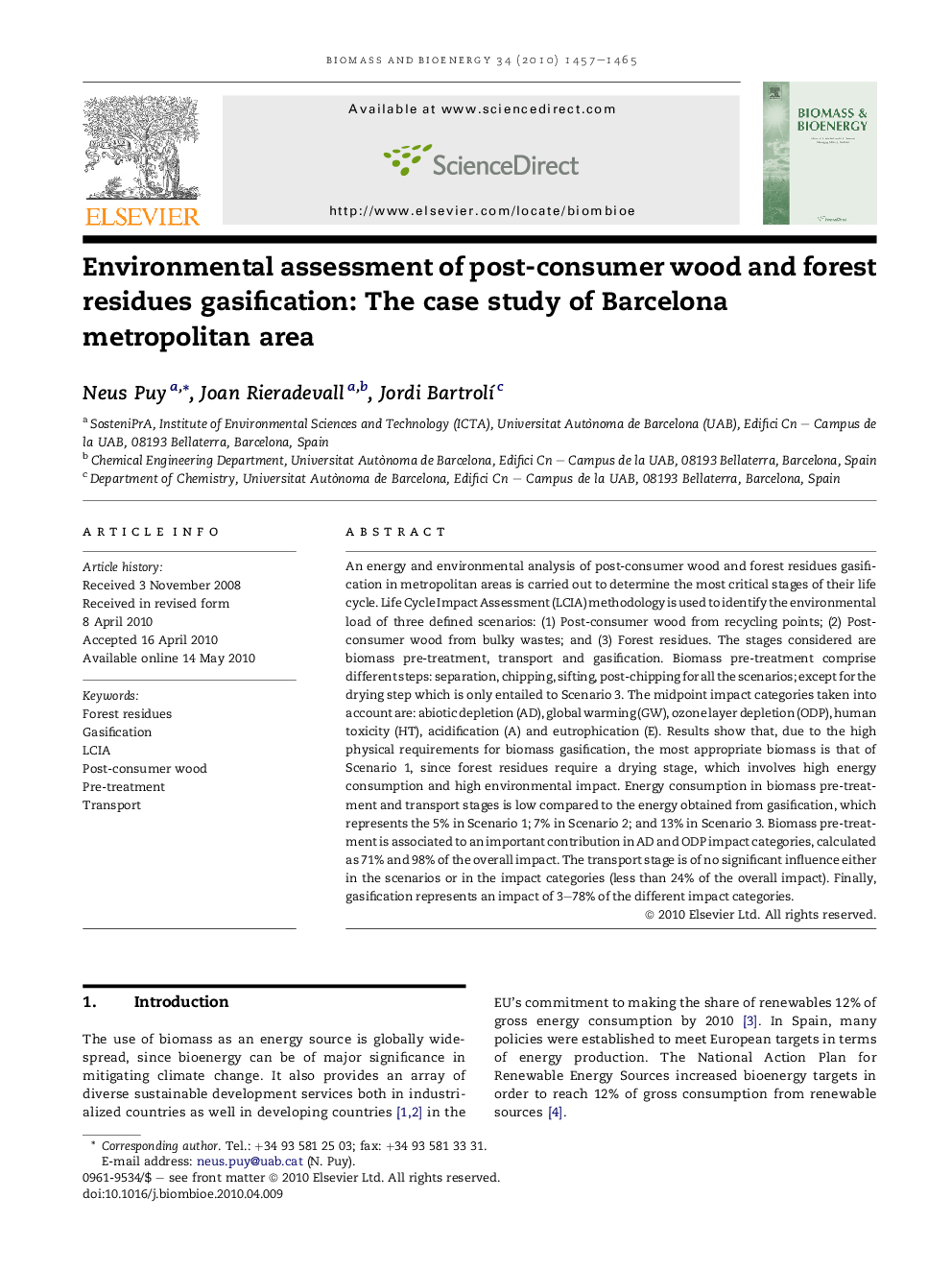| Article ID | Journal | Published Year | Pages | File Type |
|---|---|---|---|---|
| 678295 | Biomass and Bioenergy | 2010 | 9 Pages |
Abstract
An energy and environmental analysis of post-consumer wood and forest residues gasification in metropolitan areas is carried out to determine the most critical stages of their life cycle. Life Cycle Impact Assessment (LCIA) methodology is used to identify the environmental load of three defined scenarios: (1) Post-consumer wood from recycling points; (2) Post-consumer wood from bulky wastes; and (3) Forest residues. The stages considered are biomass pre-treatment, transport and gasification. Biomass pre-treatment comprise different steps: separation, chipping, sifting, post-chipping for all the scenarios; except for the drying step which is only entailed to Scenario 3. The midpoint impact categories taken into account are: abiotic depletion (AD), global warming (GW), ozone layer depletion (ODP), human toxicity (HT), acidification (A) and eutrophication (E). Results show that, due to the high physical requirements for biomass gasification, the most appropriate biomass is that of Scenario 1, since forest residues require a drying stage, which involves high energy consumption and high environmental impact. Energy consumption in biomass pre-treatment and transport stages is low compared to the energy obtained from gasification, which represents the 5% in Scenario 1; 7% in Scenario 2; and 13% in Scenario 3. Biomass pre-treatment is associated to an important contribution in AD and ODP impact categories, calculated as 71% and 98% of the overall impact. The transport stage is of no significant influence either in the scenarios or in the impact categories (less than 24% of the overall impact). Finally, gasification represents an impact of 3-78% of the different impact categories.
Related Topics
Physical Sciences and Engineering
Chemical Engineering
Process Chemistry and Technology
Authors
Neus Puy, Joan Rieradevall, Jordi BartrolÃ,
